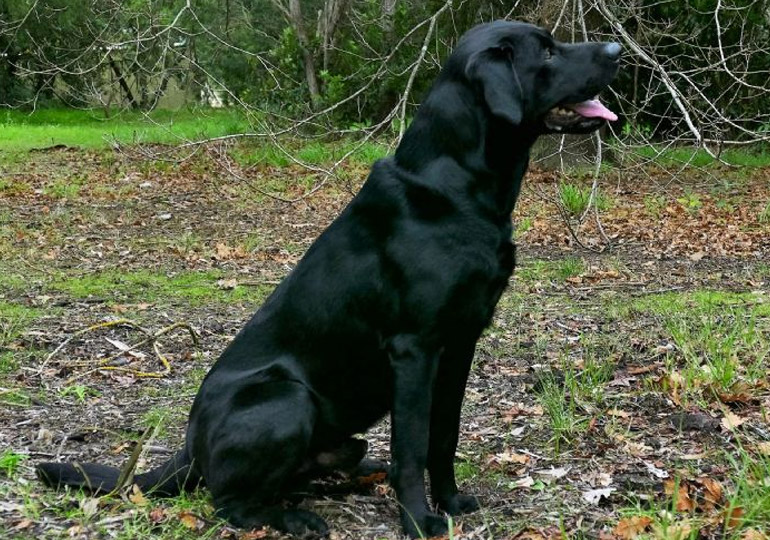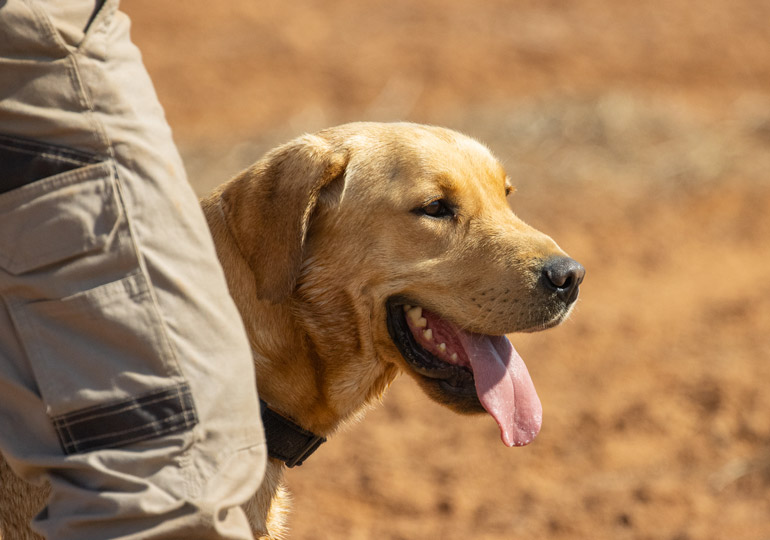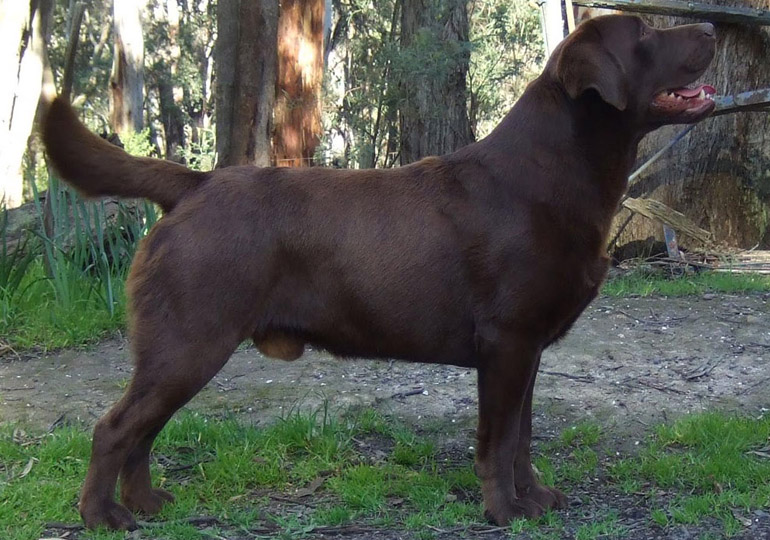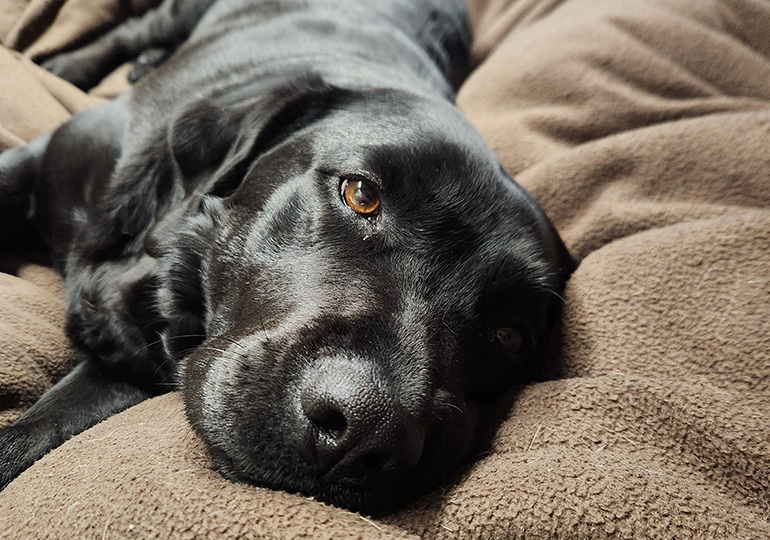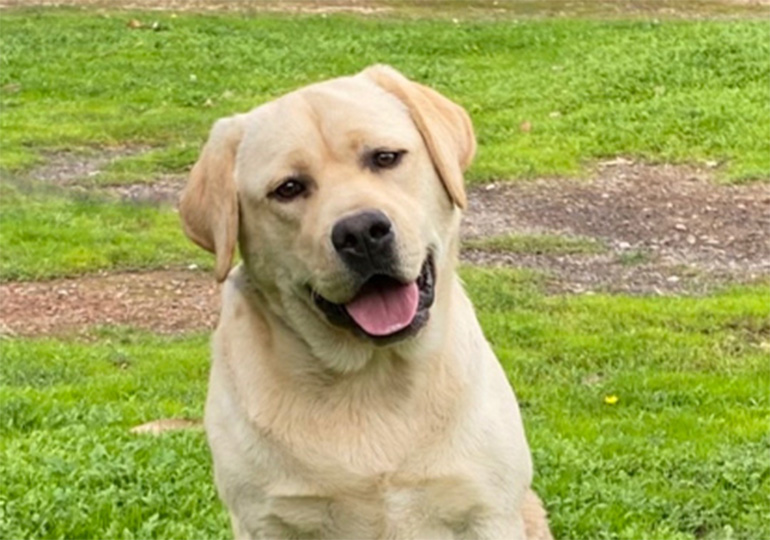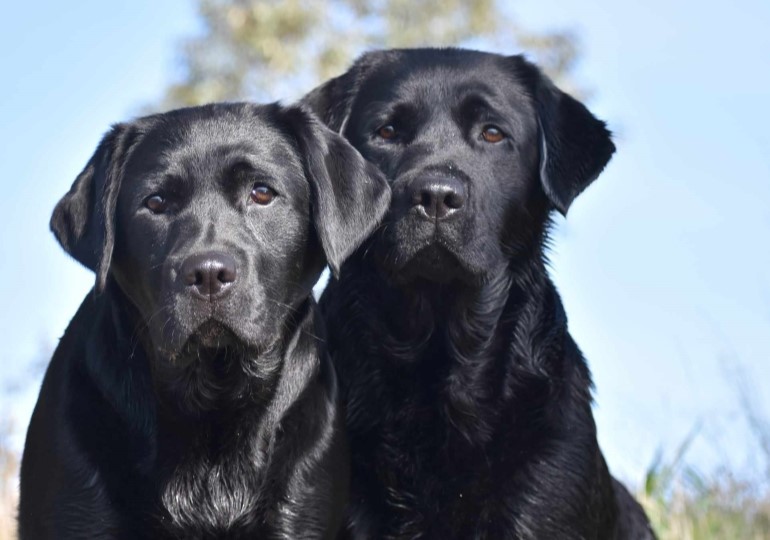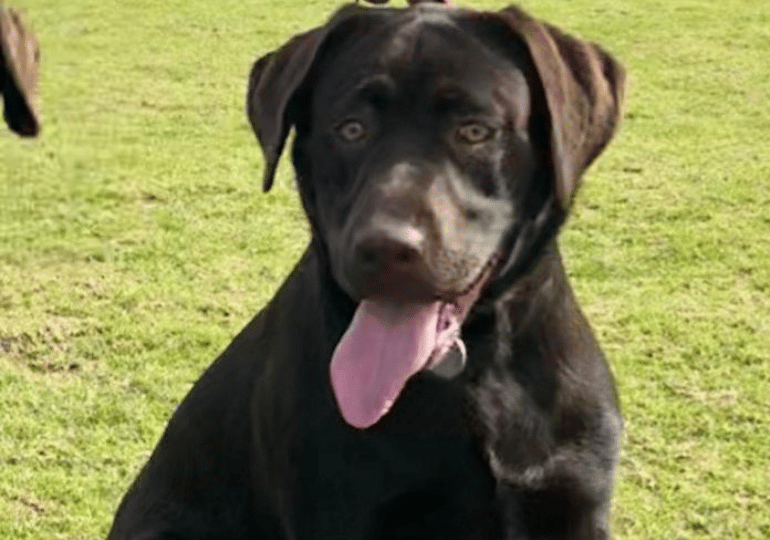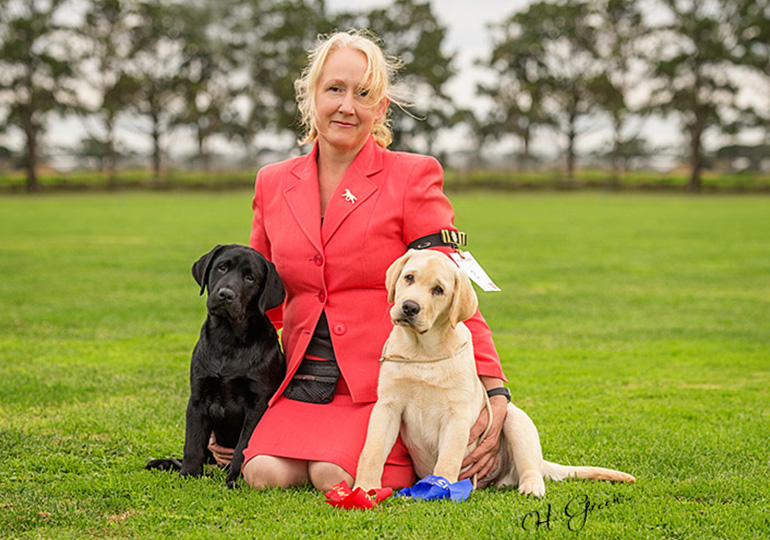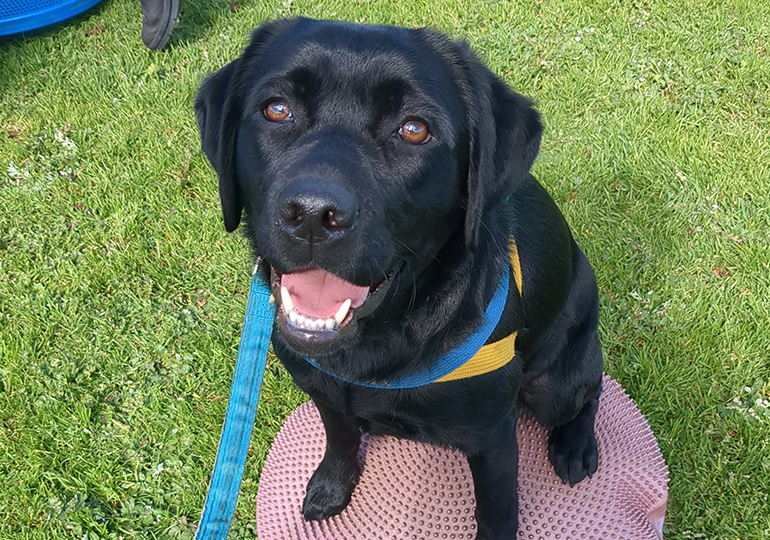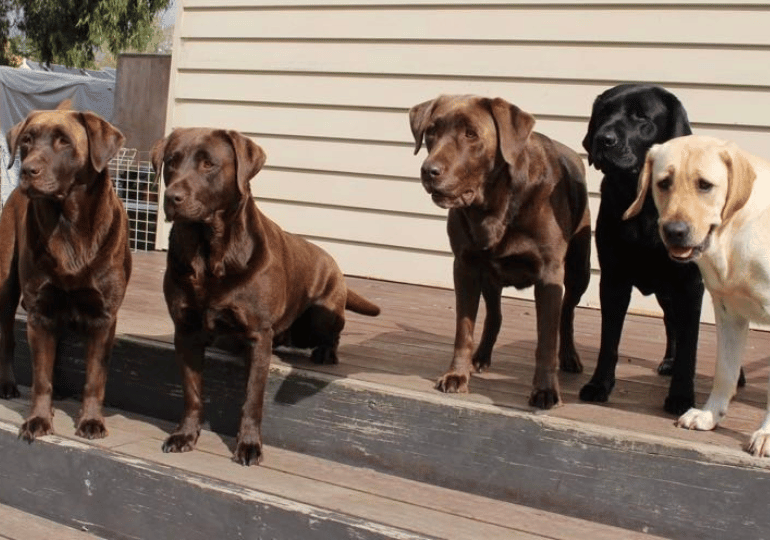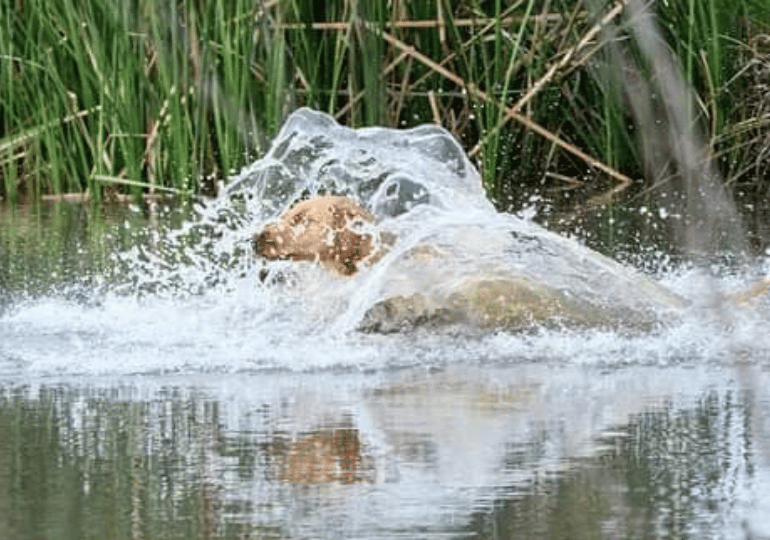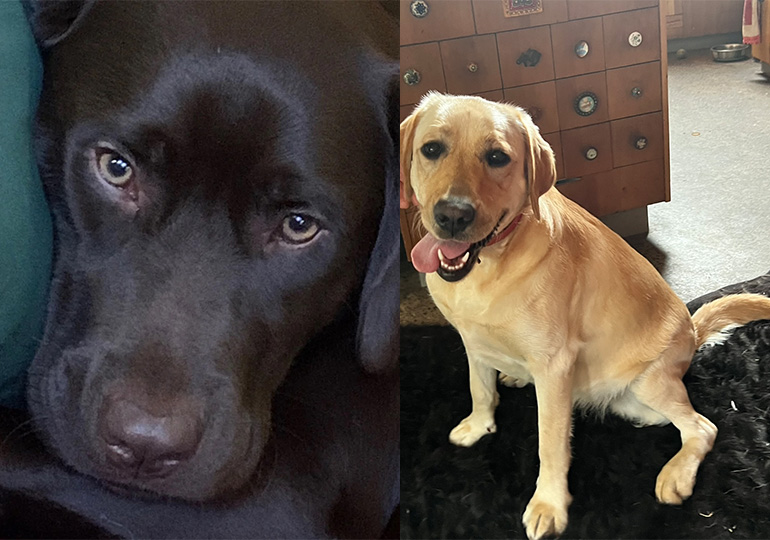Breeds
Labrador Retriever
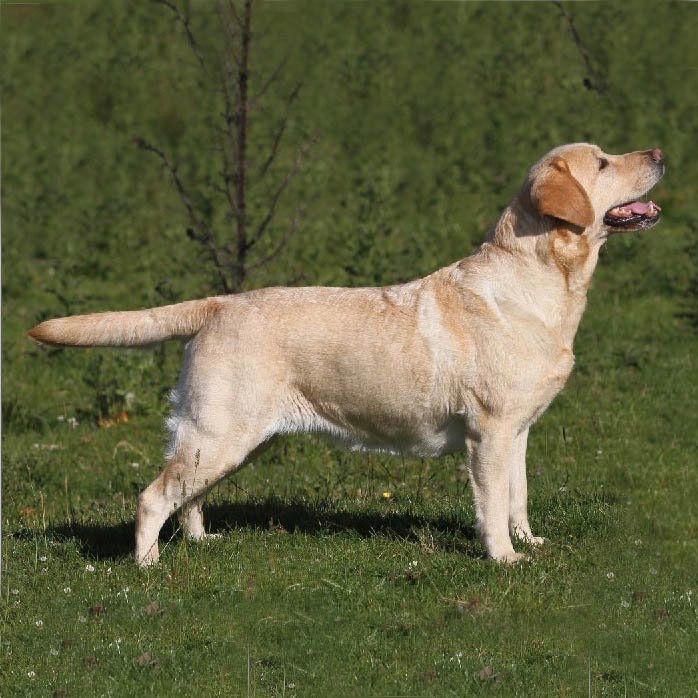
GROUP 3 - GUNDOGS
Brief History
The ancestors of the modern-day Labrador Retrievers were originally found not in Labrador, but in Newfoundland, where they were prized by fishermen, who used these dogs to retrieve fish that had escaped from the nets, carry ropes and other fishing gear in the harsh Arctic environment. Their workmanlike attitude and willingness to please their owners caught the attention of English landowners who imported these dogs to the United Kingdom, where they were developed as the all-around sporting and retrieving dog that we recognise today.
Average Life Span
When considering a dog, please realise that you are taking it on for its lifetime.
The average life span is 12 to 15 years
Temperament
The Labrador Retriever is an intelligent, good-tempered dog. He is very agile with a strong desire to please and is a keen lover of water. Labradors have a kindly and biddable nature.
General Breed Description
The Labrador Retriever is a medium/large sized dog, being strongly built, short coupled, broad in skull and broad through the chest and body, with strong hindquarters. The head and expression of the Labrador Retriever is a defining feature of the breed, with brown or hazel eyes expressing intelligence. The tail is also distinctive, being very thick, gradually tapering and of a rounded appearance like that of an otter. The Labrador may be black, yellow (ranging from cream to red fox) or liver/chocolate.
Coat and Care Requirements
The Labrador Retriever’s outer coat should be short, giving a fairly hard feel when touched, and they have a thick, dense, weather-resistant undercoat. They shed daily and despite having a short coat, they produce an extraordinary amount of hair when they moult. Daily brushing is recommended and bathing when needed.
Size
Height: Males 56 to 57cms (22 to 22.5ins), Females 55 to 56cms (21.5 to 22ins).
Health
All breeds have individual health issues. When speaking to breeders it is recommended you enquire about the breed’s health and what health testing the breeder does. The Labrador Retriever is generally a healthy breed, however health conditions do occur occasionally. These may include Hips Dysplasia (HD), Elbow Dysplasia and other health issues which can be found on the Labrador website. https://www.labvic.org.au/health-testing
Suitability
A fit Labrador Retriever will have agility, strength and stamina and their adaptability and enthusiasm for life lends them to being ideal family pets. They are best suited to active people who can provide regular exercise, as they require at least a long walk every day. Older, less active dogs can be wonderful companions for older people.
In Conclusion
Now you know a little more about this breed. If you have decided this is the dog for you and wish to investigate further, please contact the Breed Club or Dogs Victoria. They will be able to give you information about available puppies and also suggest dog events where you can see the breed and speak to breeders. In this way you will gain a better perspective of the breed and its needs. With any breed of dog, it is important to research and determine suitability for your lifestyle before committing to a puppy which will be a part of your family for many years to come.
Whilst many breeds are recommended for families, it is imperative that when children are with dogs they are supervised at all times. Basic obedience training is a vital part of dog ownership.
Dogs Victoria is about the responsible ownership of all dogs and in particular the preservation of pure breeds.
Link to Dogs Australia Breed Standard: https://dogsaustralia.org.au/breed/detail/7
Breeders
